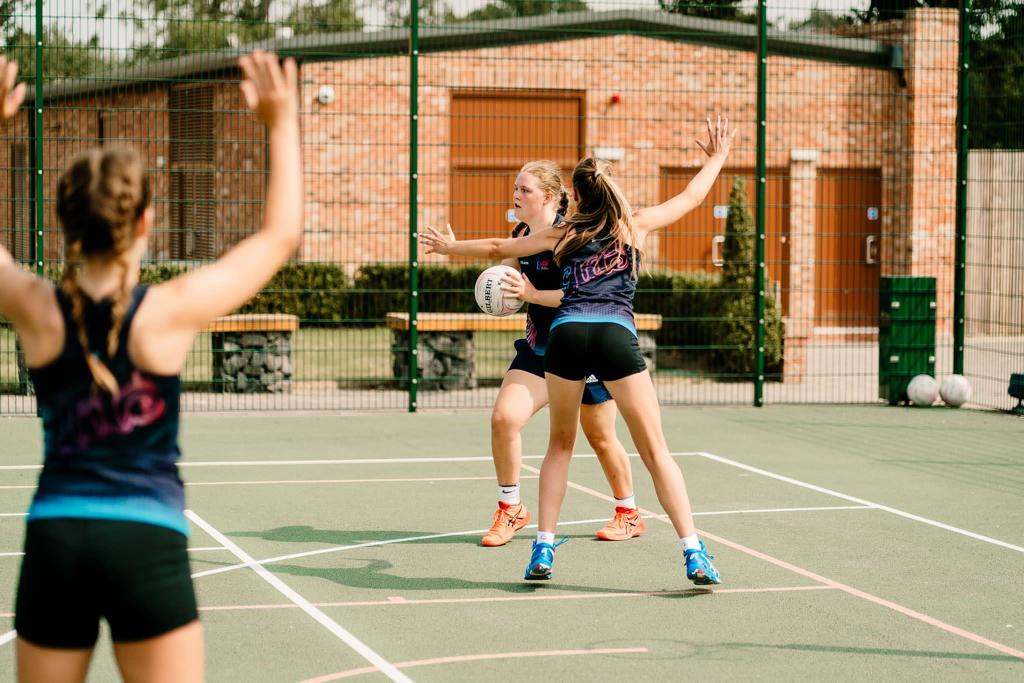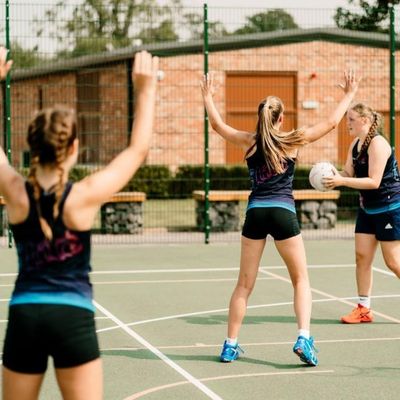Netball Centre Pass Strategies in Defence
In blog two of our centre pass series, we’re looking at defending the centre pass. For blog one, centre pass strategies and player roles, head this way.
Below you’ll find some centre pass defence strategies that your team can put into practice on the court.
But first, some fundamentals in centre pass defence that players can learn from an early age are:
- Force both the WA and GA over the line away from each other – think high and wide
- Protect the middle of the court – you can use your centre for this
- Even if 1st phase lands, try to limit 2nd phase depth down the court. Keep the attacking centre and WA and GA in the centre 3rd for as long as possible
- If you’ve held up play well, make sure your GK is alert to the GS exiting the circle. Encourage them to challenge this ball and then keep out the GS for as long as possible.
- If 1st phase lands behind the centre with the WD or GD. Can you keep everyone in the centre 3rd for as long as possible, forcing them away from their shooting circle and running back up the court
Centre pass defence strategies
The DOUBLE
Here the focus is on the C, their positioning and their connection with the WD. In most teams I’ve played for, the double means the WD and C are double-marking the WA to not receive the centre pass. The GD is doing their job forcing the GA high and wide.
The WD should communicate this with the C as they are running back.
The C and WD are working together to stop the WA from receiving the ball. If the WA goes wide either player can challenge this and the other defender then steps up to the centre.
If the ball does land with the WA you want it to be as wide as possible and high up the court. You don’t want the WA landing in the middle of the court with more court space to feed into for phase two.
If the WA is shut down on the double. The likelihood is the GA will come over the line to help for phase 1 – GD’s this is your job to make sure this is as high and wide as possible. Don’t allow the GA to get any easy ball just over the line. As this option can normally be on the 2 – 3 seconds GD’s have license to challenge this pass.
However, if the GA is the dominant receiver for the opposition and the playmaker in their attack end, you may want the C to double-mark them and help the GD on the centre pass for a few minutes to try and disrupt their flow.

3 OVER
Here your players will learn how to work as a complete defensive unit to shut down the opposition WA and GA. You want the unit to shut down any front options for the opposition centre and create errors or intercepts. The WD or GD can call a 3 over and make sure they communicate early with the centre / each other.
The first aim of any 3 over is to force the opposition team to pass the ball backwards, which is a great win and success for the defending team.
Your players must be prepared to be physical, loud and communicate with each other. There’s nothing more intimidating than a defensive team that’s clearly got everyone on the same page and working together to shut you down!
GD, WD and C are working together to create a line over the transverse line. So they are essentially creating a wall. As the attackers shift and move behind the wall, the defenders are moving together as a 3.
Once the whistle has gone you can get your WA and GA to also run down and stand in the spaces in front of the opposition’s Centre – this is called a flood.
If the ball can’t go forward and it goes back it should always be behind the centre to the opposition’s WD and GD.
So once your 3 over (wall) has made the ball go back by standing in front of their attackers. As soon as the ball goes back, they then want to reposition and get behind their attackers to force them high and wide back up the court away from their GS.
You can’t allow any attackers to break out and gain depth as this will defeat the whole 3 over. However, if any attacker does gain depth and a long driving ball is given you can ask your GK to be active again at the back and have a go on the fly.

Netball centre pass tactics as a C in defence
The role of the Centre on centre passes is to help in both attack and defence. The Centre needs to ensure they get the centre pass off quickly and accurately in attack. In defence they need to get back in time to set up the centre pass defence strategies.
Make sure you have a strong stage 2 defence over the ball. Make sure your arms are up and high over the ball – get as much pressure on the ball. Don’t put your hands to the side.
One Vs One
Once the ball has been released make sure you step up and meet your opposition centre. You’re trying to force them back into the pass they’ve just given, so squeezing attackers into the same space. Or you’re trying to keep them apart and force them away down the court on long balls you can challenge.
Double marking
If you’re asked to get back for the double make sure your body positioning and angle are in the correct position. Don’t stand flat, make sure you have a good angle and your eyes are up so you can see both the ball and the player.
Your main job is to protect the middle of the court and shut down either the WA or GA. If you’re on the double they shouldn’t be receiving the ball. So make sure you communicate with your defensive partner and if the attacker makes a drive out for phase 1 have the confidence to run your feet and challenge this.

Remember whoever goes on the wide phase 1 drive, the other defender has to step up and meet the C. If you both go together on the phase 1 attacker and it lands – you leave the centre on an undefended easy drive down the court for phase 2.
3 over
The earlier you can get back in position the better. You can either set up in the middle or on the wide whichever positions you’re most comfortable with as a defensive unit.
The WD and GD will be jumping over the line meeting you when the whistle goes from the umpire. So again stay on a good angle, don’t stand flat and keep your head and eyes up – you need to be able to shift when the attackers move behind you.
Communication is always key with a 3 over, so stay connected with your defenders and make sure you’re talking through the structure.
For a breakdown of every player’s role in one-on-one centre pass defence, download our handy guide:
I hope these centre pass defence structures and strategies help give your players more confidence to challenge the ball.
Nat







